
views
- Try rote memorization; make a list of everything you need to know and repeat them until they’re committed to memory.
- Follow the chunking method, which involves organizing information into groups or categories and memorizing piece by piece.[1]
- Chain items into a single sentence made of everything you need to know or use mnemonics to create a key sentence representing what you have to memorize.
- Memorize through association by creating an imaginary journey or walk-through to associate with the facts you need to remember.
Memorizing through Association

Understand how the associative method works. The human mind is very good at associating things. This talent runs so deep, in fact, that it's possible to use that ability to memorize things. For this memory, you'll create an imaginary journey or walk-through that you'll associate with what you have to remember. Going on your imaginary journey or walk-through will bring up your memories. Associating a concept with a certain image, person, or picture can help boost your recall.

Know what the associative method is good for. The associative method is very powerful, especially if you have a strong imagination. Throughout history, people have used some variation on the associative method (like imagining walking through mental houses, looking around an imaginary room or flipping through a pretend book) to organize memories. Memories that are easy to split up and spatially organize are best suited for the associative method - things like the stanzas of a poem, components of a machine or the procedure for cooking eggs. Memories that can't be divided up are less well-suited - like the basic idea of Abstract Expressionist painting, the history of the War of the Roses or remembering how to ask someone out.
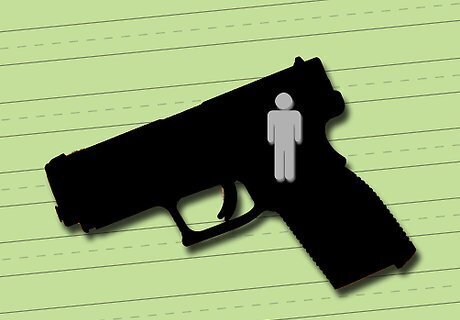
Imagine a set of second memories and associate them with what you have to remember. You'll use your second set of memories as a "key" for what you have to remember. For this reason, if you have a list of discrete items that don't fit together in any way, it'll be harder to shape your second "key" memories. For our example, we'll simply imagine being a tiny little man walking around inside a 1911 slide.
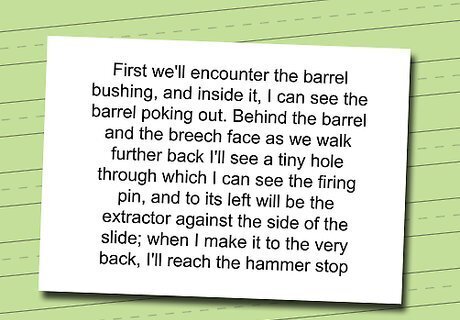
Rehearse walking through or traversing your mental map and bringing up what you have to memorize. This can be as cool and interesting or simple and easy to remember as you want to make it. For our example, a tiny man walking through a 1911 slide might say: "First we'll encounter the barrel bushing, and inside it, I can see the barrel poking out. Behind the barrel and the breech face as we walk further back I'll see a tiny hole through which I can see the firing pin, and to its left will be the extractor against the side of the slide; when I make it to the very back, I'll reach the hammer stop."
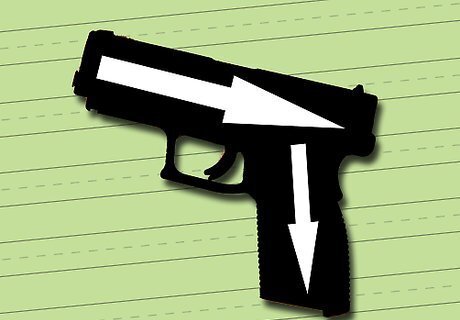
Practice traversing and exploring your mental map. A few times a day, concentrate and visualize going back through your walkthrough. The more that you practice, the easier it will be to remember.

Rehearse producing what you've memorized from your mental map. As you perform this visualization exercise, your mind will get better and better at shaping your "key" visualization, but that's not enough - you need to remember the individual components you fit into your key. Try "working backwards" - starting from a list of items, see if you can reproduce your original mental journey or "key".
Rote Memorization
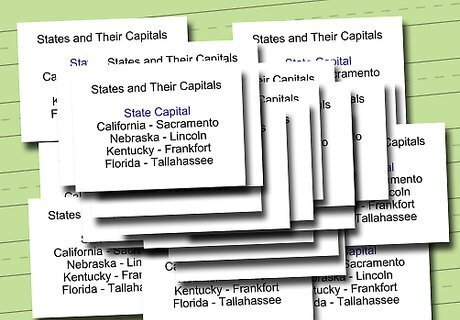
Know that rote memorization is better for some types of memory than other types. Memorizing through repetition encourages your brain to form the necessary connections to say or do what you've memorized. Rote memorization is very good for manual tasks and short lists of items like a shopping list, starting a car, or ironing a shirt. Rote memorization is not very good for memorizing a large number of separate items or single complex ideas like the elements of the periodic table from left to right, the idea of dialectical materialism, or the components of a car engine.

Make a list of what you need to memorize. Make sure your list is complete and in the sequence that you need it.

Practice reading what you've memorized. For these states, that's simply reading off your table, over and over again, the names of the states. When it comes to rote memorization, repetition is the key.
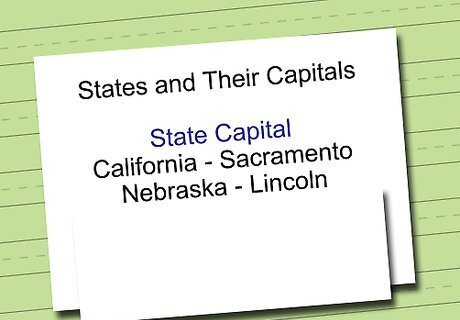
Practice producing what you've memorized without looking at your list. Try covering part or all of your list with a piece of paper and reciting what you've just covered over. Scroll down so that the previous table is covered - can you remember what goes in the last two blanks. At first you'll get a lot wrong - don't get frustrated! This is just your brain getting used to the work. Keep at it, and within a few minutes, you'll be able to remember everything you've memorized.
Chunking

Know what chunking is good for. Chunking works well when you're memorizing things that are composed of smaller things in a sensible order. Our example could subdivide by continent; the elements of the periodic table could be broken down by type; or if you have to memorize the components of an engine, you could divide it up into sub-assemblies (intake, engine, exhaust, electrical). If you've ever memorized a phone number, you might have noticed the way we write them - they're set up to be chunk-memorized. For instance, the White House phone number, (202) 456-1111 is easier to remember as three numbers - 202, 456 and 1111 - than it is to remember as a single complex number, 2,024,561,111. Chunking isn't a great strategy for big, complex things and concepts that don't break down into parts easily. For example, it's not easy to figure out what "memorizable" chunks would be for memorizing the concept of civil rights, the definition of nationhood or a list of similar phone numbers.
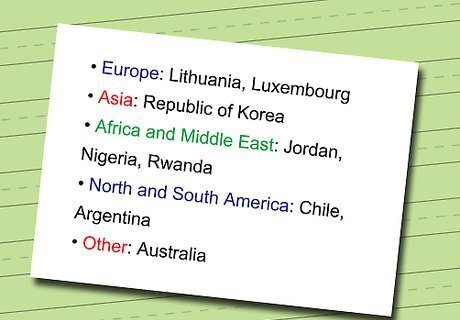
Divide what you have to memorize into smaller, easier-to-memorize pieces. Since you'll have to create smaller pieces from big ones, this strategy works best with items that you can actually break down according to some sensible scheme.
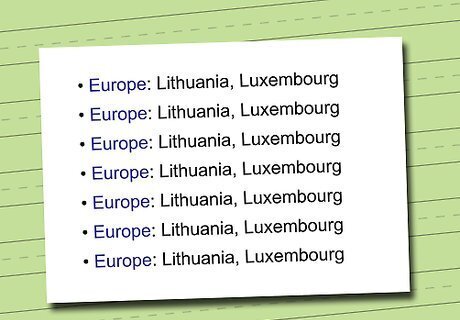
Practice producing your small items (the chunks) from memory. For our UN Security Council example, you might try reciting one of the continents and their countries from the list above:
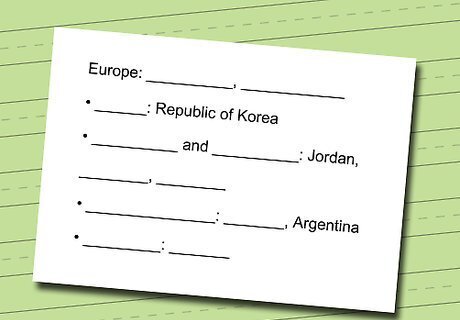
Practice combining the chunk. Mastering each individual portion or chunk is just the beginning - to fully memorize something using this method, you'll need to get the entire list down. Try scrolling down so the previous list is covered. How much of this list can you remember?
Chaining Items into a Sentence or Concept
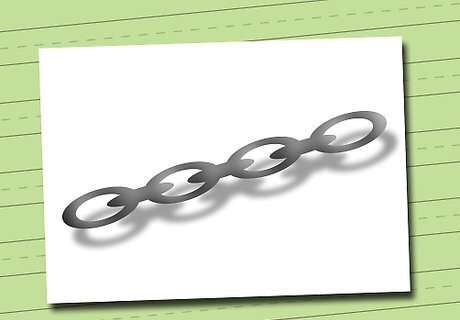
Understand what chaining is good for. If you have a very large number of things to remember, this will be unwieldy; for this reason, the chaining method is best for shorter lists of hard-to-remember items. Chaining is great for a limited number of items in an arbitrary list without any seeming relation to each other (for instance, the list tree, bird, keyboard, bottle). It's hard to apply a strategy like chunking because there aren't any real categories to break stuff down.
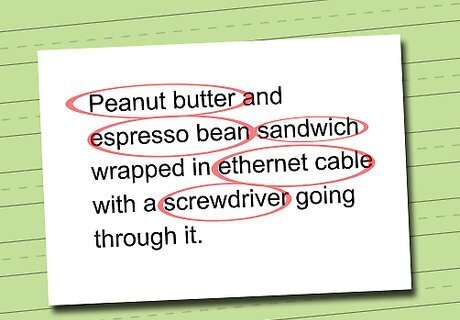
Make a sentence or image composed of all the items you have to memorize. This is the fun part of this method: the more outlandish and weird your sentence or image is, the easier it will be to remember. For instance: Peanut butter and espresso bean sandwich wrapped in ethernet cable with a screwdriver going through it.
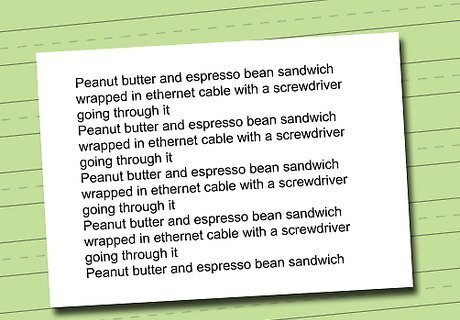
Repeat and memorize your sentence or image then practice producing the items you've memorized from your sentence or image. You'll use your sentence or image as a key that will bring up what you've memorized. Peanut butter and espresso bean sandwich wrapped in ethernet cable with a screwdriver going through it=peanut butter, espresso beans, bread, ethernet cable, screwdriver bit
Using Mnemonics
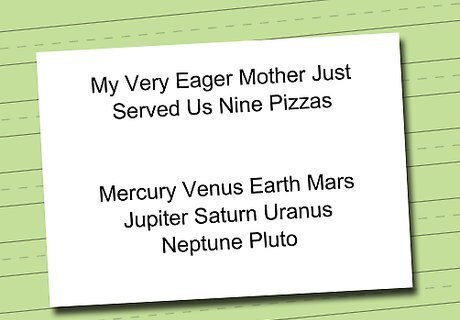
Understand what mnemonics are. Mnemonics is simply a fancy word for a process you're probably familiar with from grade school. If you've ever used ROYGBIV to remember the colors (red orange yellow green blue indigo violet), or a nonsense sentence like "My Very Eager Mother Just Served Us Nine Pizzas" to remember the planets (Mercury Venus Earth Mars Jupiter Saturn Uranus Neptune Pluto), you've used a mnemonic. In math, the mnemonic "PEMDAS" is used to recall the orders of operations. In English grammar, the mnemonic "FANBOY" is used to remember different conjunctions.
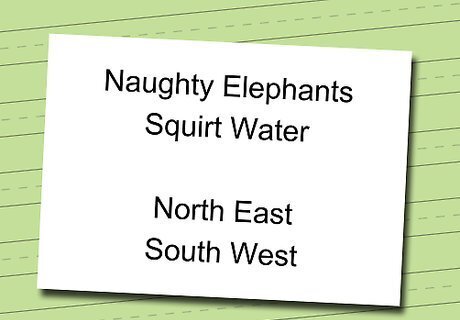
Know what mnemonics are good for. If you have to memorize more items than you can make a short sentence or phrase for, this will be hard to work with; for this reason, the mnemonic method, like chaining, is best suited for limited numbers of items you have to memorize that can fit into a scheme. Mnemonics are better suited for memorizing a list of words, for instance; it is not as good for memorizing big lists without clear organization, like a list of phone numbers or the digits of pi.
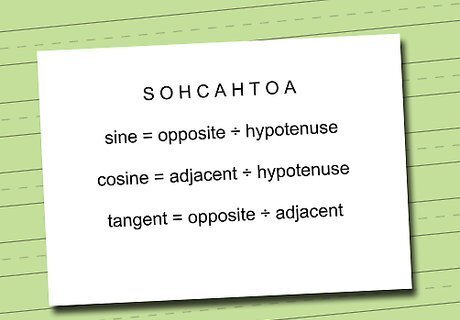
Create a mnemonic scheme. A mnemonic scheme is simply a "key" sentence or a phrase for what you have to memorize. For our example, we can make up a simple, easy to remember nonsense word.
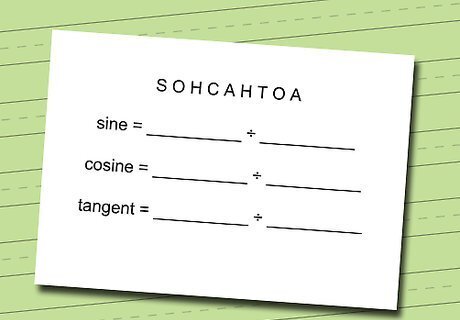
Practice remembering your mnemonic and what you have to memorize from your mnemonic. Your mnemonic serves as the 'key' to your memory. Scroll down to cover the previous list - can you remember what the mnemonic stands for?

















Comments
0 comment